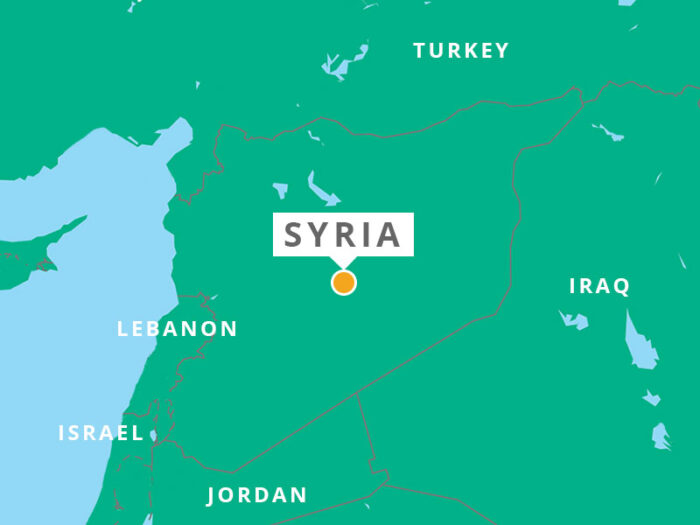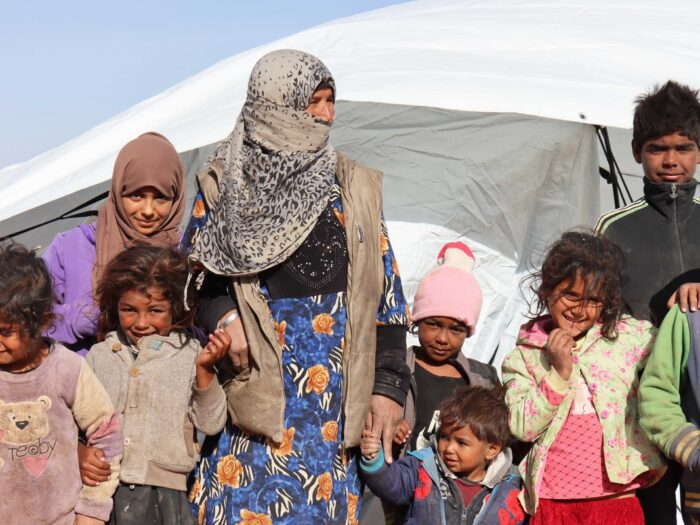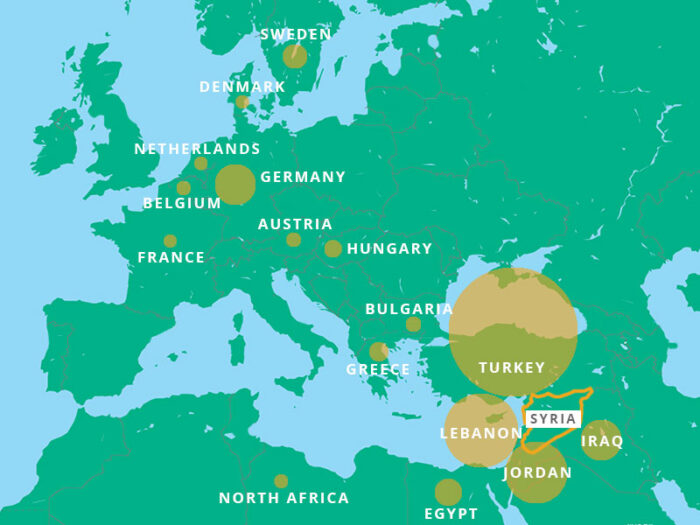
ShelterBox in Syria. 14 years since the start of the Syrian crisis
To mark the 14 year anniversary of the crisis in Syria, we look back at our longest ShelterBox response to date, in photographs.

The conflict in Syria dates back to 2011.
Many people were unhappy about the high levels of unemployment, widespread corruption and lack of political freedom.
Inspired by the ‘Arab spring’ uprisings in Tunisia and Egypt, peaceful protests started in March.
However, the peaceful demonstrations were met by swift government opposition.
When the government used deadly force to crush the dissent, protests erupted nationwide. The violence rapidly escalated, eventually giving way to a brutal war. The conflict caused the displacement of over half of Syria’s population.
The Assad regime has fallen in Syria. It’s a historic turning point in the 14-year-long civil war.
The situation is fast-moving and control is still shifting between different armed groups and opposition forces. Curfews are in place in many areas.
The situation is volatile in northeast Syria where we’re working with Bahar Organisation. There is escalating violence between different armed groups and lots of crime.
There is renewed hope for families who have been displaced to return home and reunite with friends and family.
But there is also a lot of uncertainty. There are hundreds of thousands of people on the move, but they don’t know what they will face or whether their homes are still standing.
Millions of people are still entirely reliant on humanitarian aid. And for people left exposed without adequate shelter or the right support, the harsh and unpredictable winter poses a significant risk to life.
There are many players in the Syrian conflict.
The conflict began as a Syrian uprising against the Government of Syria and its then-leader, President Bashar al-Assad.
Since then, many groups have joined the fighting, with many fighting each other.
These groups include the Free Syrian Army (FSA), Kurdish Rebel Fighters, so-called Islamic State, Jabhat Fath al-Sham, Hezbollah, the Syrian Democratic Forces (SDF) and Hayat Tahrir al-Sham (HTS).
More than half a million people have been killed since the civil war began in 2011.
International involvement has shaped the course of the conflict, too.
Russia and Iran have backed the Syrian government. At the same time, the opposition has been supported by Turkey, several Western powers and some Gulf Arab states.
Ultimately, there is no clear frontline in this war. It’s a fractured conflict with multiple parties.
Civilians are caught in the middle of shifting power dynamics and territories, not knowing where will be safe for them and their families.
Many peace negotiations have taken place over the years, but they have failed.
The United Nations held the first peace talks in 2012 in Geneva. A transition period which would result in Assad’s removal was discussed, but in 2015 Assad began consolidating his position with Russia and Iran’s backing.
In 2016 there was a second attempt at peace talks in Astana, the capital of Kazakhstan. ‘De-escalation zones’ were agreed upon, which temporarily reduced the violence. Eventually, it failed when the Syrian regime continued airstrikes in the de-escalation areas.
Two years later in January 2018, Russia sponsored new talks in Sochi. But the Syrian opposition refused to take part in the meeting because Assad’s removal from power was not a pre-condition for the talks.
In 2020, Russia and Turkey brokered a ceasefire which reduced the intensity of fighting. Localised fighting continued, and millions of displaced Syrians faced brutal winters, floods and financial issues.
In November 2024, the ceasefire collapsed. The Syrian civil war was reignited by the conflicts in Gaza and Lebanon.
The Islamist militant group Hayat Tahrir al-Sham (HTS) and allied rebel forces seized control of a number of towns and villages in Alppeo and Idlib provinces.
On the 8th December 2024 the Assad regime collapsed during a major offensive by opposition forces. This was led by the Islamist militant group Hayat Tahrir al-Sham (HTS).
This was the result of months of mounting tension, with HTS forces gaining numerous provinces around Syria.
Syria’s former president Bashar al-Assad stepped down and fled to Russia, ending his 24-year rule. This was a pivotal moment for Syria. However, the future remains highly uncertain for Syrian civilians.


Right now, over 12 million people have fled their homes.
There is significant human suffering, with more than 16 million people needing humanitarian assistance. The conflict has led to soaring food prices, electricity blackouts and difficulties accessing medical support.
The need for emergency shelter supplies remains, as people will continue to be displaced by ongoing conflict between armed groups, and existing shelters need repair after years of use.
There is still an exhausting level of upheaval for many and no clear path to peace.
Donate now

The majority of Syrian refugees have stayed in the Middle East. Syria’s neighbours, Lebanon, Jordan and Turkey are hosting over 90%.
Other families have fled to neighbouring Iraq, Egypt or North Africa.
Some refugees have fled to European countries.
At the height of the European migrant crisis in 2015, 1.3 million Syrians requested asylum with Germany, Sweden, Hungary, Greece, Austria, the Netherlands, Belgium, Denmark, France and Bulgaria receiving the most applications.
No, there is still no clear path to peace.
Despite the recent fall of the Assad regime, the situation remains volatile. Each armed opposition group, and the countries that back them, have different aims and goals.
There is hope, however. Within Syria, families demonstrate incredible resilience and resourcefulness, creating homes, running schools and businesses and giving children some sense of normality, all within displacement camps.
And beyond Syria’s borders, an emerging generation of young refugees are building their skills and seeking solutions through further education, determined to rebuild their shattered country when they can at last return.
Syria is the third least peaceful country in the world.
Although the large-scale violence subsided in Idlib after the March 2020 ceasefire agreement, localised violence continues. People are suffering from the effects of artillery shelling, air strikes, land mines, and unexploded bombs.
Soring food prices, economic sanctions have drastically increased the cost of living.
The average price of a food basket increased by 52% after the Ukraine crisis. Basic items like fuel, food and medicine are impossible to access for many due to extortionate cost.
Environmental socks and crises are common due to Syria’s geographical location.
It’s vulnerable to climate variability and climate change impacts. Risks of droughts, extreme heat events, floods and fires increase. Also, it is highly prone to earthquakes.
Learn about how ShelterBox is supporting people in Syria.